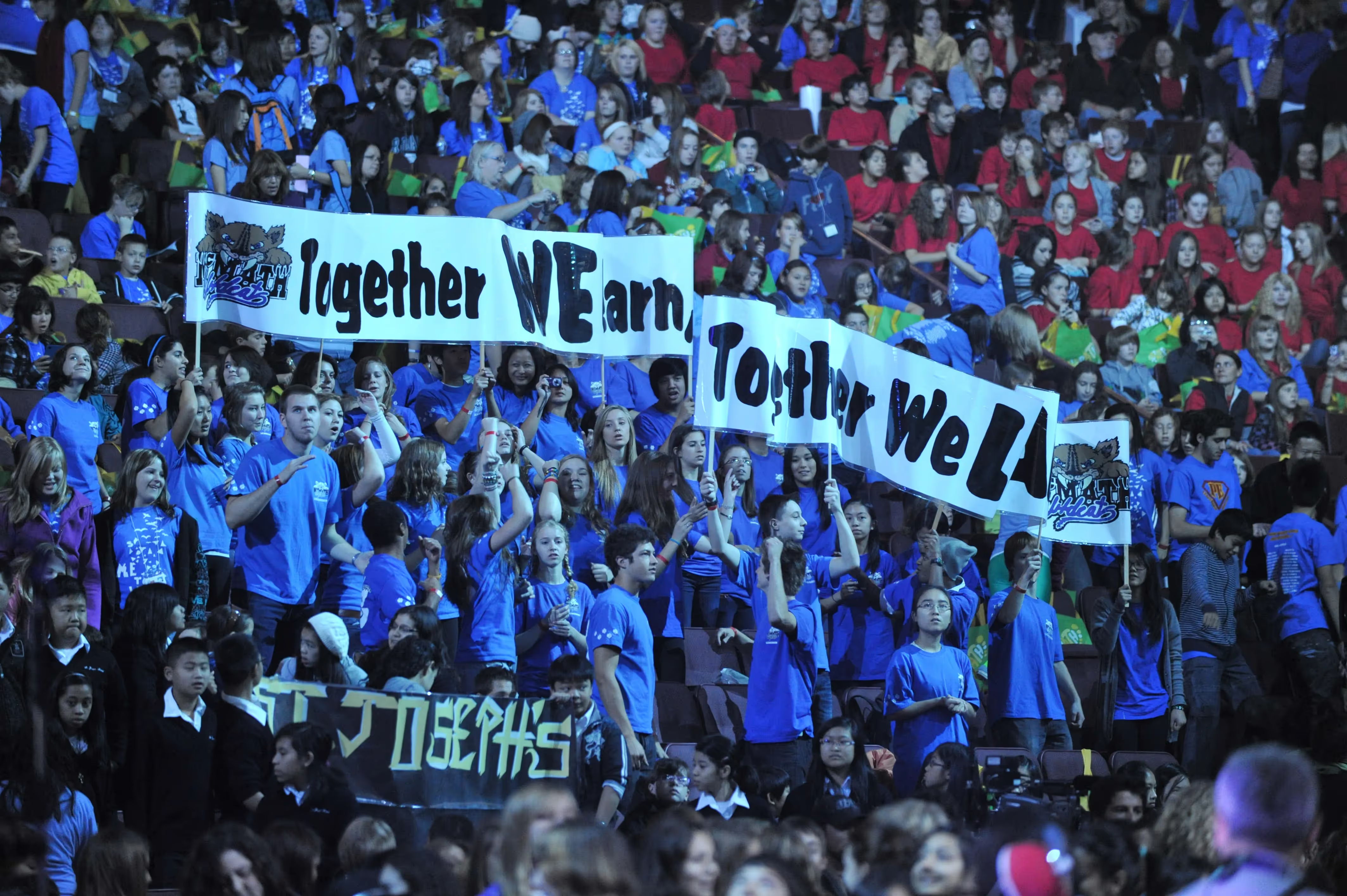

In the mid-2000s, friends and I started to think about all the star-studded award ceremonies that took place every year to acknowledge the accomplishments of talented actors and musicians and wondered why we didn’t have something similar for the everyday heroes, especially kids? We needed an Oscars for the students who are doing so much to give back to their communities and other children overseas.
That was the basis for WE Day, which was launched in 2007 as a way to acknowledge the contribution of young people who were taking action through WE Schools programming and to encourage them to do even more. In a culture increasingly focused on material wealth, it was an event that honored acts of kindness and giving. It brought young people together to celebrate their altruism and teamwork and rewarded them in a unique and fun way for the work they had done over the school year.
One part pep rally, one part motivational speeches and one part rock concert, WE Day quickly grew to multiple events a year taking place in eighteen cities in Canada, the US, the UK, and the Caribbean. And the best part was you couldn’t buy a ticket. Students earned their way into the show by taking action on causes that were important to them and their communities.
WE Day’s legacy first took shape at Toronto’s 7500 seat Ricoh Coliseum, a relatively modest venue compared to the locations for WE Days in the years that followed, The Barclays Center in NYC, the Forum in LA and Wembley Arena in London are a few examples.
Not long after, we hosted the first WE Day in the US, which featured Magic Johnson who introduced Seattle Seahawks Head Coach, Pete Carroll. Coach brought members of the team on stage with him and when quarterback Russell Wilson and Richard Sherman came up, the crowd went wild.
Microsoft’s then CEO Steve Ballmer, Macklemore and Jennifer Hudson also took to the stage.

It was an amazing start to a whirlwind tour of shows that lasted almost 13 years.
It was an amazing start to a whirlwind tour of shows that lasted almost 13 years. In total, there were over 130 WE Days, which welcomed approximately 1.5 million young people. The events were complemented by WE Day primetime specials aired regularly in both Canada and the US (on ABC), garnering millions of viewers. In all, students completed over forty million hours of service, as verified by their teachers.
Despite featuring celebrity guests and speakers like The Dalai Lama, Natalie Portman, Elie Wiesel and Prince Harry as 60 Minutes’ Scott Pelley noted in a 2013 piece about our organization, the true stars of WE Day were the kids.
Students took to the stage to share their stories of overcoming bullying, dealing with depression, raising funds for kids in their neighborhoods or across the ocean.
I often think about two of the bravest people I ever met young people facing terrible, incurable illnesses who took to the WE Day stage to share their stories and raise awareness of their diseases. Despite facing the worst of circumstances, they always prioritized helping others.
One was Jonathan Pitre, who had a devastatingly painful and debilitating skin condition but was laser focused on raising awareness of his disease and working to find a cure so that other children didn’t have to ensure the same disease.
Similarly, Annie Bartlett spent much of her young life in hospital due to Cystic Fibrosis, but it never stopped her from being a dancer, artist and tireless advocate for finding a cure for CF.
Sadly, both Jonathan and Annie passed away in 2018, but their courageous and giving spirits will always be with me. Annie’s parents wrote her obituary and in it they wrote that Annie lived by the credo “If you get given a great gift, what’s the point if you can’t help other people.”
During that first WE Day tour across America, some events stand out in my mind to this day. At WE Day California in 2013, Selena Gomez moved us all with her powerful “Trust Yourself” speech in which she shared the hardships she's encountered in her life and career and encouraged the crowd of 16,000 youth to never ever give up on their dreams.
Later that year at WE Day Minnesota, Martin Luther King III delivered a powerful speech to the audience that coincided with the 50th anniversary of his father’s “I have a Dream Speech”. It was one of the most inspirational and energizing segments in the history of WE Day.
In the ensuing years, there were many other inspirational and memorable moments including appearances by Elie Wiesel, Mikhail Gorbachev, His Holiness the Dali Lama, Jane Goddall and so many more.
WE Day started out with a goal of recognizing youth who made it cool to give back to their community and support people in the developing world. It became part of a global movement for hope and change.